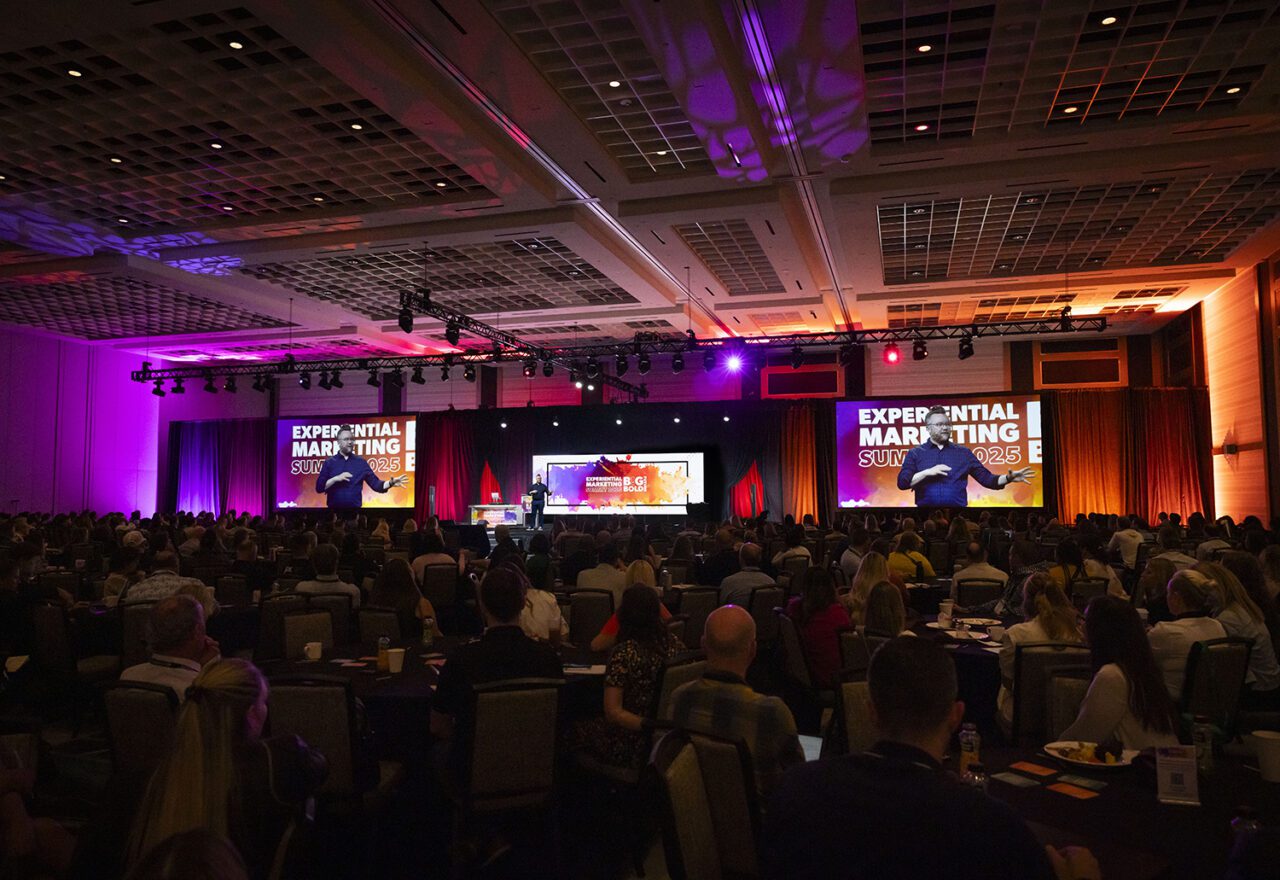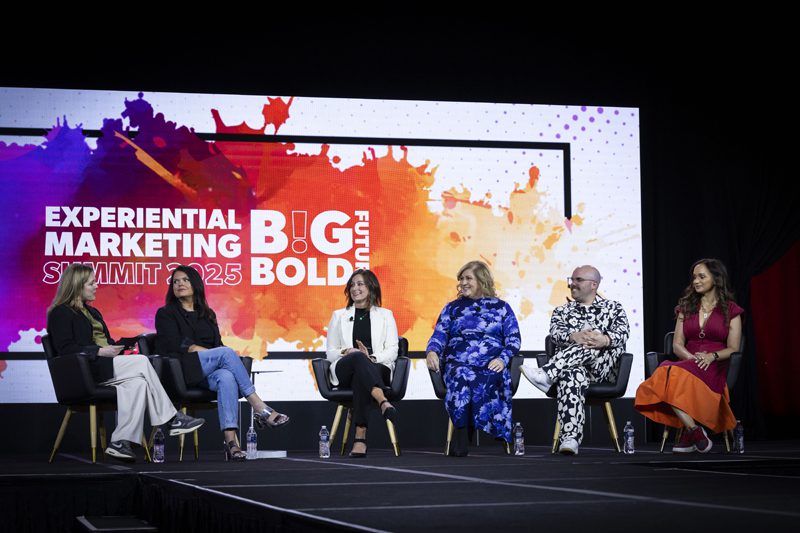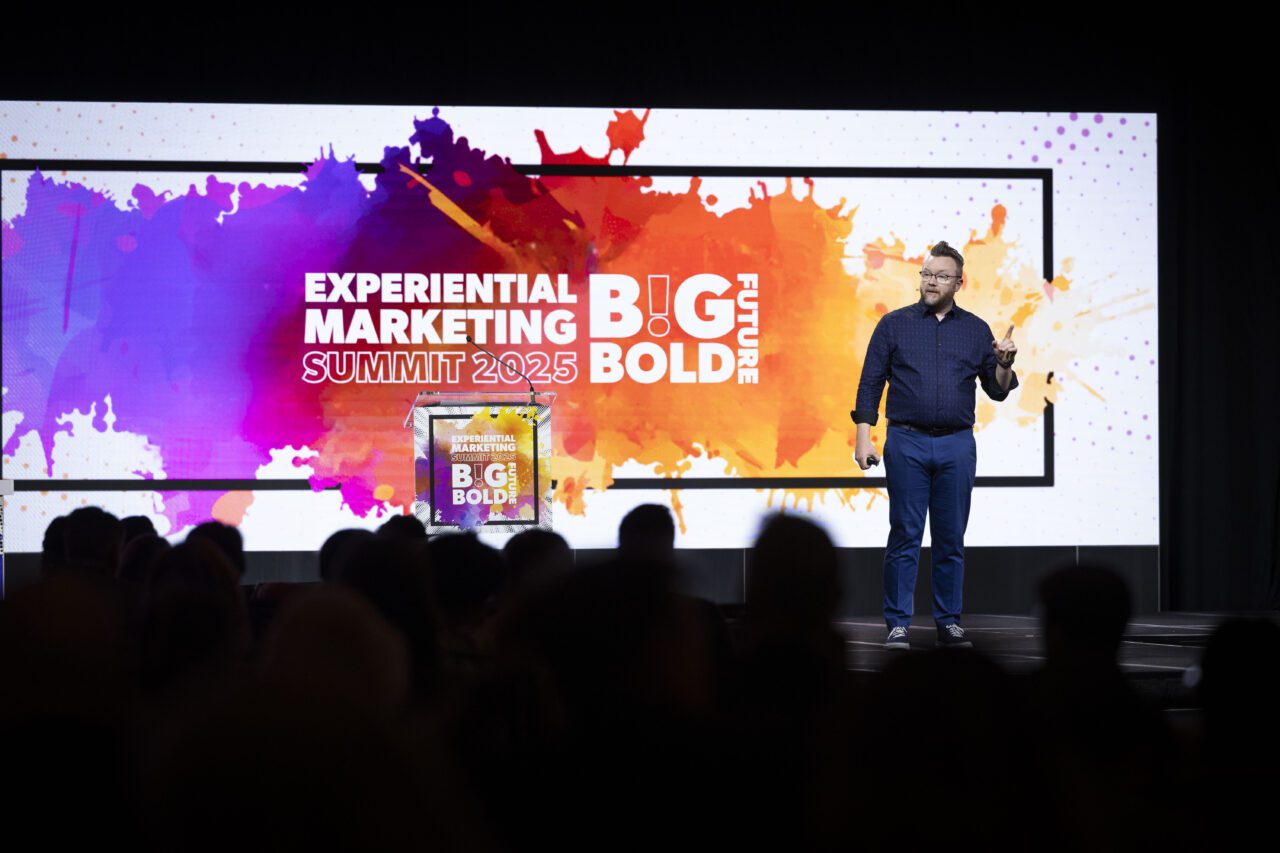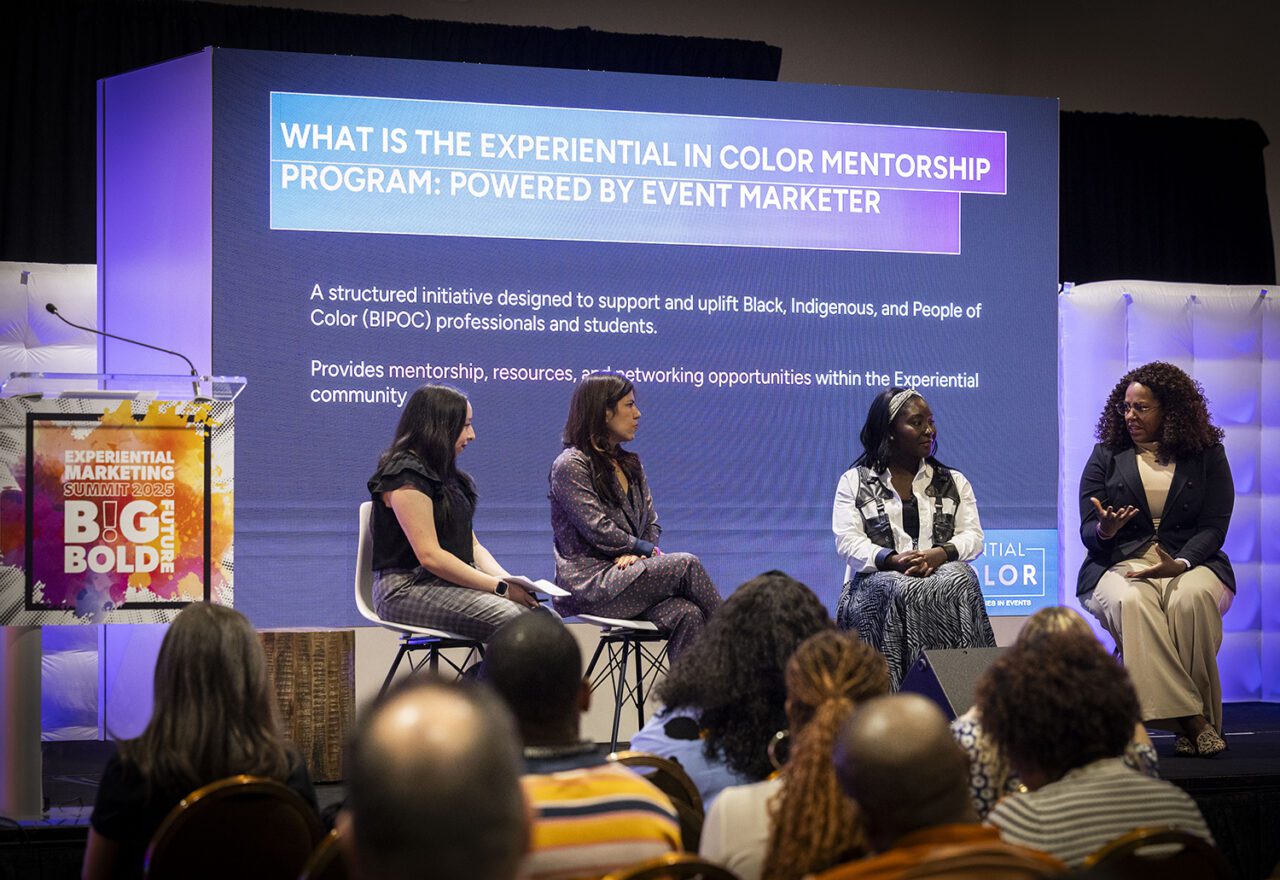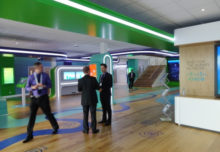 The 2025 Experiential Marketing Summit (EMS) brought the high-octane energy, camaraderie and compelling perspectives the annual industry showcase is known for, and a global audience of more than 1,500 b-to-b and b-to-c marketers, trade show organizers, agency execs, meeting planners, event strategists, sustainability champs and technologists kept the good vibes and peer-to-peer education going strong throughout the 23rd annual show, hosted this year April 14-16 at the MGM Grand, Las Vegas.
The 2025 Experiential Marketing Summit (EMS) brought the high-octane energy, camaraderie and compelling perspectives the annual industry showcase is known for, and a global audience of more than 1,500 b-to-b and b-to-c marketers, trade show organizers, agency execs, meeting planners, event strategists, sustainability champs and technologists kept the good vibes and peer-to-peer education going strong throughout the 23rd annual show, hosted this year April 14-16 at the MGM Grand, Las Vegas.
Across the three-day huddle, guided by the world’s most prolific practitioners, countless insights on the trends and tactics propelling experiential marketing forward came to the forefront. From the power of co-creation to community stewardship to keeping pace with the speed of culture, EMS instructors—and attendees—laid it all on the table.
If you missed the action, don’t worry; we’ve got your back. Check out our recap of the most-talked about topics at EMS 2025, and don’t forget to mark your calendars for EMS 2026, May 18-20 at the MGM Grand.
Team-building and Transparency
The significance of forging partnerships and being intentional about building internal teams was underscored across a host of EMS 2025 sessions, with an emphasis on being transparent, fostering trust and leveraging the right teams for the right experience. Speakers noted that initial friction can be overcome through constructive problem-solving and honest conversations about what works, what doesn’t and why. And egos? There’s no room for them if you want to build a successful collab.
As Shiz Suzuki, vp-global brand sponsorships and experiential marketing at American Express, put it during her keynote: “Make sure you have teams that represent the audience you’re trying to reach. When I build my Coachella team, they’re not all Gen Xers, for example. And trust them. When they come to you and say, I want the thematic for this year’s festival to be ‘glimmer’ or ‘delulu evolulu’, roll with it.”
Or take the advice of Charlotte Pedersen, senior director-global strategic events at Salesforce: “You can’t do epic sh!t with basic people. Be really, really thoughtful about your teams.”
Creativity on a Budget
Between global tariffs and a volatile economy, many event organizers have found themselves grappling with smaller budgets. But EMS instructors consistently framed the scenario as an opportunity, a chance to expand, not constrain, creativity. As a result, event profs are discovering innovative strategies for maximizing impact while minimizing costs.
Practical tips on navigating budget challenges while maintaining creative integrity included integrating experiential campaigns into the broader marketing mix, leveraging the reach of content creators to democratize events, utilizing imaginative brainstorming activities to foster spontaneous thinking, and embracing, not bucking, limitations.
As artist and author Phil Hansen said during his opening keynote: “Giving ourselves intentional limitations is a really powerful way to reshape not just that singular project, but our whole mindset about little challenges and discoveries… Anytime there’s something big in our lives, instead of telling each other to seize the day, we should remind ourselves as much as we can to seize the limitation.”
Serious About Sustainability
Throughout the conference, speakers and attendees made it clear that sustainability isn’t a buzz word or fleeting trend; it’s an essential piece of the event marketing puzzle that needs to be solved. Across consumer events, conferences and trade shows, marketers are drilling down their eco-friendly practices and long-term solutions by considering the ecological impact of an event from the get-go, and increasingly prioritizing reusable materials, digital content and modular designs that minimize environmental effects while maximizing utility. Measurement and reporting of sustainable practices was also discussed, with a focus on using alternative KPIs, like “return on engagement,” to evaluate the effectiveness of sustainability initiatives.
“Choosing partners who have sustainability in their DNA—who genuinely prioritize it beyond marketing—is essential,” said Rodney Hart, vp-events at RainFocus. “Retrofitting sustainability into an existing event is often costly; it’s far more effective to embed sustainable thinking from the outset.”
‘Servant’ Sponsorships
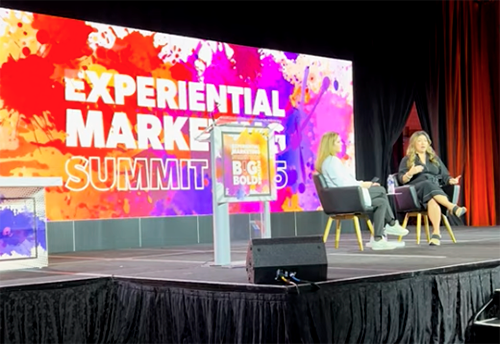 Some of the most successful sponsorship marketing campaigns this year aren’t carving out real estate; they’re creating it. It’s not how a property will help the brand; it’s who the brand can help, reach and amplify through that property. If what you want doesn’t exist—build it. In the case of American Express, as it looked to make connections with motorsports fans and find a throughline for its Small Business initiatives, it turned its attention to the growing female audience of fans and, specifically, female drivers to support F1 Academy, the female-only, Formula 4-level, single-seater racing championship, supported by American Express and a cast of women-owned businesses around the world.
Some of the most successful sponsorship marketing campaigns this year aren’t carving out real estate; they’re creating it. It’s not how a property will help the brand; it’s who the brand can help, reach and amplify through that property. If what you want doesn’t exist—build it. In the case of American Express, as it looked to make connections with motorsports fans and find a throughline for its Small Business initiatives, it turned its attention to the growing female audience of fans and, specifically, female drivers to support F1 Academy, the female-only, Formula 4-level, single-seater racing championship, supported by American Express and a cast of women-owned businesses around the world.
“We’re not only investing in it, but in the case of Formula 1, we were asking for it,” says Shiz Suzuki, vp-global brand sponsorships and experiential marketing at American Express. “We were very vocal at the negotiations that something needed to happen, something needed to exist. When Formula 1 Academy was announced, we were the first global, non-endemic brand to be announced as partner.”
Taking lessons from its small-business programming with the LPGA and the US Women’s Open, Amex designed a livery for its car in F1 Academy, which promoted the brand’s Small Business initiatives. And at every race stop around the world, the company partnered with women-owned SMBs to feature their logo on the car that race weekend.
“We thought long and hard about this because our goal isn’t to just put American Express on the track,” Suzuki says, explaining how the deals went beyond the track as drivers then visited the businesses and filmed content, driving storytelling and layers of engagement and sponsorship. –R.B.
Co-creation and Collaboration
It’s not just younger demographics that want to co-create with brands; it’s pretty much about everyone. Passive events and experiences are becoming a relic of the past as attendees increasingly demonstrate their desire for a stake in the creative process, whatever that may be, and a chance to build experiences alongside the host brand. From bringing small businesses into the fold to asking attendees to craft original content, it’s about empowering them to be collaborators, not just observers.
Community Guardianship
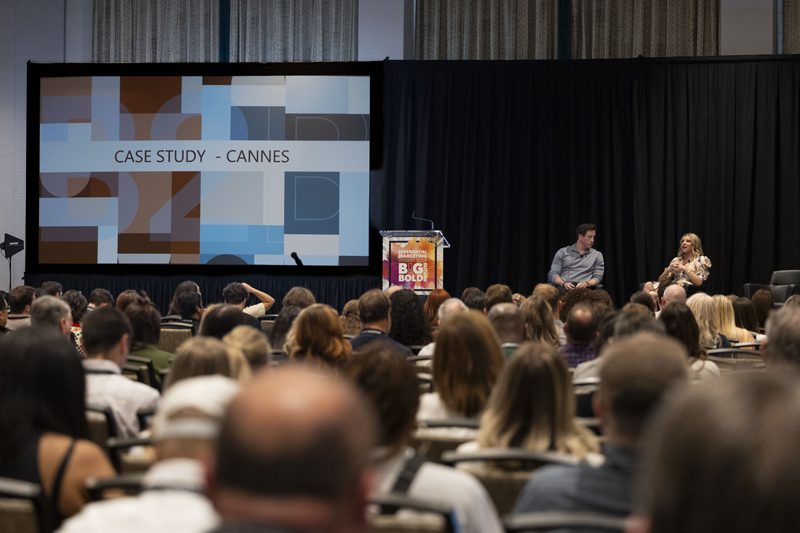 If there’s one word dominating the experiential marketing industry, it’s “community.” But event profs aren’t just cultivating and curating communities, they’re carving out space for those groups to organically grow. The most successful brands are serving as guardians who don’t micro-manage, but rather, protect and nurture their communities, and provide them the room to evolve on their own.
If there’s one word dominating the experiential marketing industry, it’s “community.” But event profs aren’t just cultivating and curating communities, they’re carving out space for those groups to organically grow. The most successful brands are serving as guardians who don’t micro-manage, but rather, protect and nurture their communities, and provide them the room to evolve on their own.
Listening to the community and actively seeking feedback from event participants are key practices that inform product development and strengthen relationships. Speakers recommended leading with a genuine mission, prioritizing listening over talking and leaving space for community development.
As Kate Kerner, vp-global strategic events at Genesys, put it: “The event itself is not the foundation—it’s the outcome of the community you build and nurture.”
Transformational vs. Transactional
Event marketers are in the business of making people feel something, which makes crafting emotionally impactful experiences crucial to long-term engagement and loyalty. At EMS, companies like Sony demonstrated that when brands put aside their metrics and sales tactics in favor of awe-inducing experiences and emotionally resonant moments, the results that matter are off the charts.
“The truth about a lot of brand events is that they’re not about a mission; they’re about KPIs. And KPIs are not a mission,” said Matt Parnell, head of brand and community marketing at Sony. “A lot of times, what happens with KPIs is that you will pick the shortest route to get there. If it’s impressions or something else, it’s just whatever will get me there the fastest. But it doesn’t give you a connection… So we believe that community events should be transformational, not transactional.”
AI Integrations
AI has infiltrated nearly every aspect of the event marketing discipline, whether it’s crunching numbers behind the scenes and providing teams with more time for ideation, or front-and-center in personalized attendee-facing experiences that enhance the way audiences interact with a brand. At EMS, AI’s ability to streamline and optimize event ops was a hot topic, with speakers pointing to AI tools like custom ChatGPT models, Leonardo AI and Copilot being used to generate innovative ideas, and automate time-sucking tasks.
Speakers brought up a number of examples, including using optical character recognition that quickly converts a badge or business card information into text, enriching the data and integrating it with CRM systems to significantly reducing follow-up times. AI tools are also utilized for transcribing b-to-b sessions and generating documents, ensuring that learning outcomes are retained and put into action. Overall, AI is proving to be a powerful tool in advancing the efficiency, personalization and effectiveness of event planning and execution.
“I’m sure you’ve heard this quote: ‘AI won’t replace you, but someone using AI will,’” said Keri Ibbitson, director-scientific engagements and events at Danaher. “You can reframe the way you think about that quote as, ‘AI won’t replace you; it replaces the version of you that worked twice as long for half the impact.’”
Keeping Pace with Pop Culture
It’s no secret that event marketers are expected to move at the speed of culture to deliver the most relevant experiences possible for their specific target. According to EMS speakers, the key is to ensure that authenticity doesn’t slip out the window just because a company wants to jump on a trend while it’s hot. Brands should understand how a trend aligns with their personality or mission before jumping on the bandwagon.
“When brands misuse speed and culture, it can come across as inauthentic. So I challenge our team, and I know my boss challenges me, to make sure that when we do move at this speed, that we are showing up in a way that is authentic to our brand,” said Patrick O’Keefe, chief integrated marketing officer at e.l.f. Beauty. “The word ‘authentic’ is another overused term. So when our community tells us something, we may jump in and we may not. But from our ceo, all the way down to the coordinator and admin assistant, everybody is always looking for something new to talk about. When we see something… we dive in deep and we find our unique way in that no one else could.”


